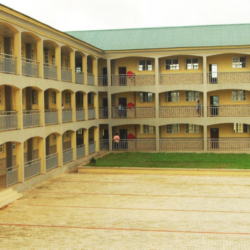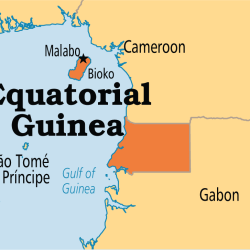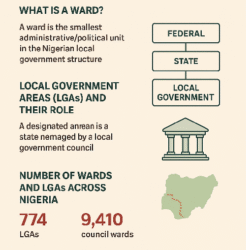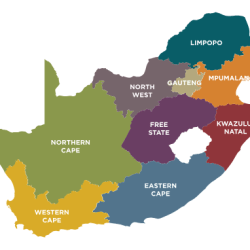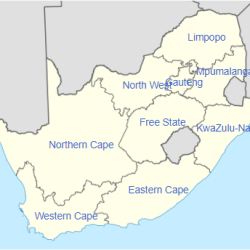1. Introduction to the Salaga Slave Market
The Salaga Slave Market, located in the East Gonja District of northern Ghana, stands as one of the most significant historical markers of the Trans-Atlantic and Trans-Saharan slave trades. During the 18th and 19th centuries, this bustling market acted as a central hub where enslaved individuals from various parts of the African continent were gathered, traded, and transported to the coast for export. Salaga’s importance lay not only in its role in the Atlantic trade but also in its crucial position along trans-Saharan routes, connecting sub-Saharan Africa to North African and Mediterranean markets.
The story of the Salaga Slave Market is a painful reminder of Africa’s participation in a global trade network driven by human exploitation. Yet, it is also a testament to the resilience of communities that have rebuilt themselves after such devastating losses.
2. Historical Background of the Salaga Slave Market
The rise of the Salaga Slave Market can be traced back to the 18th century, when both the Trans-Atlantic and Trans-Saharan slave trades were in full swing. The Trans-Atlantic trade, which saw millions of Africans transported across the ocean to the Americas, was one of the most extensive forced migrations in human history. During this period, Salaga became a key trading post for European and African traders alike.
At the same time, the trans-Saharan slave trade—which had been active for centuries prior—funneled slaves from West Africa across the Sahara Desert to markets in North Africa and the Middle East. Salaga’s strategic location made it an ideal convergence point for both of these major trade routes, allowing it to serve as a major outpost for the movement of slaves destined for either oceanic or desert-bound export.

3. Geography and Location
Salaga is located in the East Gonja District of northern Ghana, a region that was integral to trade networks in West Africa during the 18th and 19th centuries. Its proximity to both river systems and overland routes connecting the Sahel and the southern coast made it a logistical hub for traders.

Situated on the Volta River basin, Salaga was easily accessible for caravans transporting slaves and goods to the coastal regions, from where ships bound for Europe and the Americas waited. It also lay along routes that stretched across the Sahara Desert, allowing traders to access the rich markets of North Africa.

4. The Role of Salaga in the Trans-Atlantic Slave Trade
As one of the principal West African slave markets, Salaga was an essential player in the Trans-Atlantic slave trade. Slaves from Salaga were typically transported to the coastal regions of modern-day Ghana, where European traders would load them onto ships for the grueling Middle Passage to the Americas. This trade fed the demand for labor on plantations in the Caribbean, Brazil, and the southern United States.

European powers, particularly the British, Portuguese, and French, relied heavily on markets like Salaga for a steady supply of labor. Enslaved men, women, and children were captured or sold to traders, marched in chains to Salaga, and from there, sent to the coast, often covering hundreds of miles in deplorable conditions.
5. The Role of Salaga in the Trans-Saharan Slave Trade
While the Trans-Atlantic trade is often more well-known due to its massive scale, the trans-Saharan slave trade was equally significant in shaping the economies and societies of the time. For centuries, African slaves were transported northward through the Sahara Desert, often destined for markets in North Africa, the Middle East, and parts of Southern Europe.
Salaga served as a major hub for this trade. From the market, slaves were organized into caravans and marched across the Sahara, enduring grueling conditions that mirrored the brutalities of the Atlantic crossing. These slaves were often sold to wealthy merchants and rulers in North Africa and the Ottoman Empire, where they worked as laborers, concubines, and soldiers.
6. Slave Transportation and Logistics
The logistics of transporting slaves from Salaga were complex and fraught with challenges. Enslaved individuals were marched in long caravans, often chained together, and forced to travel great distances by foot. Many of these slaves had already endured the trauma of capture or sale within their home regions before being moved to Salaga.
For those destined for the Atlantic trade, the next stage of their journey involved being sold at coastal ports such as Cape Coast and Elmina. Meanwhile, those bound for the Sahara would be handed over to desert traders who specialized in trans-Saharan routes, with camels and donkeys playing a crucial role in ferrying them through the harsh desert terrain.
7. Economic Importance of the Salaga Slave Market
In the 18th and 19th centuries, the Salaga Slave Market was more than just a center for human trafficking. It was a vibrant trading hub where merchants could exchange slaves, gold, salt, and other valuable commodities. The market contributed significantly to the local economy, with traders profiting from both the sale of slaves and the goods they acquired in return.
Salt, in particular, was a highly sought-after commodity in the Salaga market. Salt was transported from coastal areas and traded for slaves or other goods, helping to drive regional trade and establish Salaga as a major economic center.
8. Key Players and Power Dynamics
The Salaga Slave Market was sustained by a complex web of actors, from local chiefs and merchants to European traders and North African elites. African chiefs often played a dual role, controlling the supply of slaves while benefiting from the economic opportunities presented by the market. These chiefs would sell prisoners of war, criminals, or members of rival ethnic groups into slavery, ensuring a steady supply of human capital for the market.
Colonial powers, particularly the British, also played an important role in regulating and expanding the market, particularly as European nations jockeyed for control over West African trade routes and resources.
9. Conditions of Slaves in the Market
Life for enslaved individuals in Salaga was harsh and dehumanizing. Many slaves were held in makeshift camps or compounds while they awaited sale, often suffering from malnutrition, disease, and physical abuse. The conditions in these holding areas were overcrowded, unsanitary, and dangerous, with death rates sometimes running high due to the poor treatment slaves received.
In some cases, slaves were held for weeks or months, awaiting the arrival of a caravan or a ship bound for the coast. During this time, they were at the mercy of traders who had little regard for their well-being.
10. Salaga’s Role in West African Slave Routes
Salaga was deeply integrated into a network of West African slave routes that connected the interior regions of the continent to the coast and beyond. Slaves captured in inland regions such as Mali, Burkina Faso, and Niger were often routed through Salaga before being sold to European or Arab traders. From Salaga, slaves could be transported south to ports along the Atlantic coast or north across the Sahara.
This extensive network of routes made Salaga one of the most important slave markets in West Africa and a critical juncture for the trade in human beings.



